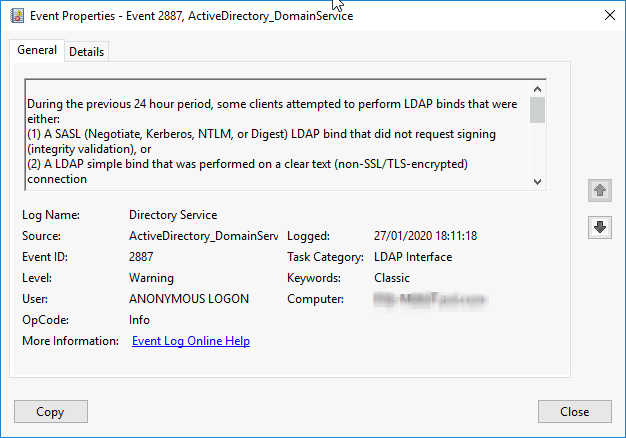

- #Microsoft ldap query tool how to
- #Microsoft ldap query tool cracked
- #Microsoft ldap query tool password
- #Microsoft ldap query tool Offline
Make sure your security team is aware of common Kerberoasting risks and strategies, along with the tools and alerts Azure ATP offers to help protect your domain.Īs always, we welcome your feedback about our work, and are interested in learning more about the security threats and risks you encounter. Kerberoasting remains a popular attack method and heavily discussed security issue, but the effects of a successful Kerberoasting attack are real.
#Microsoft ldap query tool password
#Microsoft ldap query tool how to
The following workflow explains how to use Azure ATP alerts to detect and remediate Kerberoasting attempts on your domain. Historical comparisons and activity correlation Attempted enumeration details and specificsģ. Starting from v2.72, Azure ATP issues a Security principal reconnaissance (LDAP) alert when the first stage of a Kerberoasting attack attempt is detected on the domains we monitor.Įach alert includes vital information for use in your investigation and remediation:Ģ. Our newest security alert involves smart behavioral detection backed by extensive machine learning, designed to raise an alert when any type of abnormal enumeration (including SPN enumeration), or queries on sensitive security groups are detected.

While this type of attack is difficult to detect, and LDAP’s extensive query language presented additional challenges, our security research work involved differentiating legitimate workflows from malicious behavior and surfacing all related activities and entities. In cases where the attempted brute force attack (shown previously) is successful, attackers use the newly obtained clear-text password to login to remote machines or access cloud resources and files.įigure 6 - Interactive clear-text logon How can you detect and prevent Kerberoast attacks from succeeding?Īzure Advanced Threat Protection (Azure ATP) has risen to the Kerberoasting challenge and developed new methods to detect when malicious actors are attempting to perform LDAP based reconnaissance on your domain.
#Microsoft ldap query tool cracked
In the following example, a commonly used password cracking tool, JohnTheRipper, performs a successful brute force using a rainbow table.įigure 5 - Cracked password using a rainbow table In the brute force phase of the attack, by using commonly available password cracking tools on accounts with commonly used passwords, attackers easily succeed at obtaining the password. In this phase of the attack, a request is made for Kerberos TGS to the SPN using a valid TGT.įigure 3- TGS request to ExampleService of user1 by user2įigure 4 - TGS response with ticket to ExampleService of user1 Running this LDAP query is possible for all user accounts in a domain.įigure 2- LDAP query that looks for all user accounts with a SPN set In this attack phase, attackers are using LDAP to query and locate all user accounts with a Service Principal Name (SPN). Typical LDAP based Kerberoasting attack flow and result: The following attack logic is often used to find an organization's weakest link and perform LDAP based Kerberoast attacks.įigure 1-Typical Kerberoasting attack flow Domain account passwords enable attackers to freely move laterally in your domain.Įnvironments where the Kerberos Ticket Granting Service (TGS) is encrypted with a weak cipher, and the cipher is generated from a well-known password (not randomly generated) are prime targets for successful brute force attacks of this type.

This action helps attackers locate a password that belongs to a domain account.
#Microsoft ldap query tool Offline
Once successful at listing these accounts, attackers grant Kerberos Service Tickets for each user account with an SPN and later perform offline Brute Force on the encrypted part of the Kerberos tickets. In a typical Kerberoasting attack, attackers exploit LDAP vulnerabilities to generate a list of all user accounts with a Kerberos Service Principal Name (SPN) available.


 0 kommentar(er)
0 kommentar(er)
